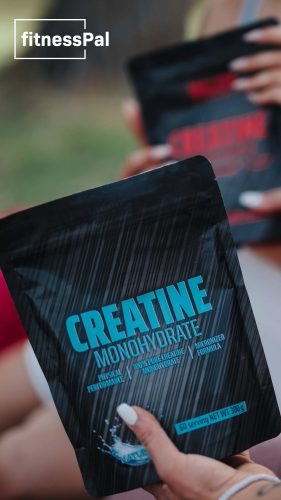Ready to transform your physique? Building muscle as a skinny person isn't just possible – it's a journey many have successfully completed. Your body is primed for what fitness experts call "newbie gains," meaning you can build muscle faster than the average person starting out.
According to research from Bony to Beastly, skinny beginners can gain 9-15 pounds of muscle in their first 8-12 weeks of proper training. That's an impressive start to your transformation journey! The key is understanding that this is a process that combines smart training, proper nutrition, and consistency.
Your transformation potential is significant. Studies from Train with Kickoff show that noticeable muscle changes can appear within 6-10 weeks of dedicated training. This isn't just about looking better – you'll feel stronger, more confident, and healthier too.
The journey from skinny to strong requires a strategic approach. Research published by LiveStrong emphasizes that successful transformations happen through a combination of resistance training, proper nutrition, and adequate recovery. You'll need to eat more than you're used to, lift progressively heavier weights, and give your body time to adapt and grow.
Remember, this isn't about overnight changes. According to OkonFit, natural athletes can realistically gain 8-15 pounds of muscle in their first year. While that might seem modest, it's enough to completely transform your appearance when combined with proper training and nutrition.
Let's break down exactly what you need to know to make your transformation successful. Whether you're just starting or have tried before without success, this guide will show you the proven path from skinny to strong.
Understanding Your Starting Point
Let's begin your muscle-building journey by understanding where you're starting from. If you've always been naturally slim, you likely have an ectomorph body type. Ectomorphs typically have a lean build, fast metabolism, and narrow shoulders - but don't worry, these traits don't define your potential!
First, grab your measuring tape and scale. Track your current weight, body measurements, and take clear progress photos from multiple angles. According to research from the International Journal of Exercise Science, having baseline measurements significantly improves your chances of reaching your fitness goals by up to 33%.
Your starting strength matters too. Before diving into heavy lifting, test your basics:
- Maximum push-ups in one set
- Hold time in a plank position
- Number of bodyweight squats with proper form
- Maximum pull-ups or assisted pull-ups
Don't feel discouraged if these numbers are low - everyone starts somewhere! Studies show that skinny individuals often experience faster initial strength gains compared to other body types.
Common challenges you might face include:
- Struggling to eat enough calories consistently
- Feeling overwhelmed in the gym
- Muscle soreness in the beginning
- Slow initial visible progress
Remember, your metabolism isn't working against you - it's actually a gift. A faster metabolism means you can eat more food while staying lean, which becomes advantageous when building muscle strategically. Research indicates that ectomorphs often have excellent nutrient partitioning, meaning their bodies are efficient at directing calories toward muscle growth when training properly.
Ready to transform? Your next step is creating a structured plan based on these initial measurements. Track everything in a fitness app or journal - this data will become your roadmap to success.
The Science Behind Muscle Growth
Building muscle isn't just about lifting weights – it's a fascinating biological process that happens in your body. Let's break down the science into bite-sized pieces you can easily understand and apply to your fitness journey.
Muscle Growth Basics
Your muscles grow through a process called hypertrophy. Think of it like building a house – when you exercise, you create tiny tears in your muscle fibers. Your body repairs these tears by fusing muscle fibers together, making them bigger and stronger than before. This is why you feel sore after a good workout – it's your body's repair crew getting to work!
The Protein Connection
Protein is your body's building block for muscle. When you exercise, your body increases protein synthesis – basically, it starts building more muscle tissue. Research shows that consuming 20-25 grams of protein within 2 hours after your workout gives your body the materials it needs for optimal muscle growth.
Hormones: Your Body's Natural Muscle Builders
Your hormones play a huge role in muscle growth. Testosterone, growth hormone, and insulin-like growth factor (IGF-1) are your body's natural muscle-building team. These hormones spike during exercise and help trigger muscle growth. The good news? Regular strength training naturally boosts these helpful hormones.
The Rest and Recovery Secret
Here's something many people miss: muscles don't grow during your workout – they grow while you rest. During sleep, your body releases most of its growth hormone, making those precious 7-9 hours of shuteye crucial for muscle growth.
Your Genetic Blueprint
While genetics play a role in how quickly you build muscle, they don't determine your destiny. Studies show that everyone can build muscle with proper training and nutrition, regardless of their genetic starting point. Some people might see results faster than others, but consistency beats genetics every time.
Remember, muscle growth is a gradual process that requires patience and consistency. Focus on proper form, progressive overload, and adequate nutrition, and your body will respond with the muscle growth you're looking for.
Creating Your Transformation Timeline
Ready to build muscle? Let's map out your journey with realistic expectations and clear milestones. Your transformation won't happen overnight, but you'll be amazed at what your body can achieve with dedication and patience.
The First 4-8 Weeks
Get ready for some exciting initial changes! Your strength will increase noticeably during these first weeks. While you might not see massive muscle growth yet, you'll feel stronger and more coordinated. Your body is learning proper form and developing crucial neural connections.
Months 2-3: The "Newbie Gains" Phase
This is where the magic happens! According to research from Bony to Beastly, beginners can gain 8-15 pounds of muscle during their first couple of months. You'll notice your clothes fitting differently, and friends might start commenting on your changes.
Months 4-6: Steady Progress
Your progress will become more consistent but slower than the initial burst. Expect to gain 1-2 pounds of muscle per month with proper training and nutrition. This is when tracking your measurements becomes crucial for staying motivated.
Months 6-12: Long-Term Development
The Train with Kickoff blog reports that after six months, muscle gains typically slow to about 0.5-1 pound per month. Don't get discouraged – this is completely normal and shows you're making steady progress.
Key Progress Markers
Track these milestones to stay motivated:
- Week 4: Increased strength in main lifts
- Week 8: Visible muscle definition changes
- Week 12: Noticeable size increases
- Month 6: Significant body composition changes
- Year 1: Total transformation visible
Remember, everyone's journey is unique. Focus on your personal progress rather than comparing yourself to others. Stay consistent with your training and nutrition, and the results will come. Keep taking progress photos every 4-6 weeks – they're your best tool for seeing how far you've come!
Nutrition Strategy for Muscle Gain
Building muscle requires a strategic approach to nutrition. Let's break down exactly what you need to eat to transform your physique.
Calorie Surplus: Your Growth Foundation
You need extra calories to build muscle. Aim for 300-500 calories above your maintenance level daily. For example, if you maintain your weight at 2,500 calories, consume 2,800-3,000 calories to support muscle growth. Track your progress and adjust these numbers based on your results.
Protein: The Building Blocks
Consume 1.6-2.2 grams of protein per kilogram of body weight daily. For a 70kg person, that's 112-154 grams of protein. Space your protein intake across 4-5 meals for optimal muscle synthesis. Great protein sources include:
- Chicken breast (31g per 100g)
- Greek yogurt (10g per 100g)
- Eggs (6g per large egg)
- Lean beef (26g per 100g)
Carbs: Your Energy Source
Aim for 4-7g of carbs per kilogram of body weight. Carbs fuel your workouts and support recovery. Focus on:
- Rice
- Sweet potatoes
- Oats
- Whole grain pasta
Healthy Fats: Supporting Growth
Include 0.5-1g of fat per kilogram of body weight. Essential fats support hormone production, including testosterone. Choose:
- Avocados
- Nuts and seeds
- Olive oil
- Fatty fish
Meal Timing
Eat every 3-4 hours to maintain positive protein balance. Have a meal containing protein and carbs within 2 hours of training. This timing helps maximize muscle growth and recovery.
Smart Supplementation
While whole foods should be your primary focus, certain supplements can help:
- Whey protein (for convenient protein intake)
- Creatine monohydrate (5g daily)
- Vitamin D (if deficient)
Remember, consistency with your nutrition plan matters more than perfection. Start with these guidelines and adjust based on your progress and energy levels.
[Sources: Livestrong, Journal of the International Society of Sports Nutrition]
Effective Training Protocol
Ready to transform your physique? Let's build your perfect workout plan. Your training needs to be strategic and consistent to see real results.
Compound Exercises: Your Foundation
Focus on these powerful moves to stimulate maximum muscle growth:
- Squats and deadlifts for lower body strength
- Bench press and overhead press for upper body development
- Pull-ups and rows for back thickness
- Dips and push-ups for overall upper body power
According to research from the Journal of Strength and Conditioning, compound movements trigger the highest testosterone release, perfect for muscle growth.
Training Frequency
Hit each muscle group 2-3 times per week. This sweet spot maximizes protein synthesis while allowing proper recovery. Start with:
- Monday: Upper body
- Tuesday: Lower body
- Wednesday: Rest
- Thursday: Upper body
- Friday: Lower body
- Weekend: Active recovery
Progressive Overload: Your Growth Engine
Track your weights and gradually increase them. Add 2.5-5 pounds when you can complete all sets with perfect form. This steady progression ensures continuous muscle development.
Recovery Strategies
Your muscles grow during rest, not during workouts. Prioritize:
- 7-9 hours of quality sleep
- 48 hours between training the same muscle groups
- Light activity on rest days
- Proper post-workout nutrition within 30 minutes
Workout Structure
Design your sessions for maximum effectiveness:
- 3-4 sets per exercise
- 8-12 reps for muscle growth
- 60-90 second rest between sets
- 45-60 minute total workout duration
Remember, consistency beats intensity. Stick to your plan for at least 12 weeks to see significant changes. Track your progress and adjust as needed.
Source: Bony to Beastly Transformation Guide
Common Mistakes to Avoid
Building muscle isn't just about lifting weights and eating more. Let's explore the key mistakes that could be holding back your transformation journey.
Nutrition Mistakes That Slow Progress
Skipping meals is your biggest enemy. Your body needs consistent fuel throughout the day to build muscle. According to research from Precision Nutrition, missing meals can decrease your daily protein synthesis by up to 20%.
Not tracking your food intake can also derail your progress. Many skinny individuals think they're eating enough, but studies show they often underestimate their calorie intake by 30-40%. Start using a food tracking app to ensure you're hitting your targets.
Training Errors That Limit Gains
Focusing only on isolation exercises is a common mistake. Compound movements like squats, deadlifts, and bench presses stimulate more muscle growth. Research shows these exercises can increase testosterone levels by up to 25% more than isolation movements.
Program hopping is another progress killer. Switching workouts every few weeks prevents your body from adapting and growing. Stick to a proven program for at least 12 weeks before making changes.
Recovery Mistakes That Hurt Results
Poor sleep habits can seriously impact your gains. During deep sleep, your body releases up to 70% of its daily growth hormone supply. Aim for 7-9 hours of quality sleep each night.
Overtraining is equally problematic. Your muscles need time to repair and grow stronger. Research indicates that training the same muscle group more than 2-3 times per week can actually slow down progress for beginners.
Mental Barriers to Break
Expecting overnight results leads to frustration and giving up. According to a study by the University of Texas, natural muscle gain typically ranges from 0.5-2 pounds per month. Set realistic expectations and celebrate small wins.
Remember, consistency beats perfection. Focus on building sustainable habits rather than pursuing the "perfect" workout or diet plan. Your transformation journey is a marathon, not a sprint.
Sources:
- Precision Nutrition - Muscle Gain Guide
- University of Texas Exercise Science Department
- Journal of Strength and Conditioning Research
Tracking Progress
Building muscle requires patience and consistency. Let's explore proven ways to track your transformation and stay on course.
Measuring Your Success
Take monthly progress photos from multiple angles - front, side, and back. Wear the same clothes and maintain consistent lighting and poses. These visual records often reveal changes that daily mirror checks might miss.
Track your body measurements every 2-3 weeks using a flexible measuring tape. Focus on key areas:
- Upper arms (flexed)
- Chest
- Shoulders
- Waist
- Thighs
- Calves
Strength Benchmarks
Record your performance in compound exercises. According to Stronger By Science, typical strength progression for beginners includes:
- Adding 5-10 pounds to major lifts weekly
- Increasing workout volume by 10% monthly
- Doubling initial lifting weights within 6-8 months
Smart Adjustments
Monitor your progress and adjust your approach when needed:
- If weight gain stalls, add 200-300 daily calories
- When strength plateaus, modify your training volume or frequency
- If recovery suffers, evaluate sleep quality and stress levels
According to Renaissance Periodization, successful transformations often require program adjustments every 4-6 weeks based on measured outcomes.
Digital Tools
Use these reliable tracking methods:
- Progress tracking apps (Strong, Fitbod)
- Body composition scales
- Food tracking apps
- Workout journals
Remember, consistent tracking helps identify what works best for your body and keeps you accountable to your goals. Focus on trends rather than daily fluctuations for the most accurate picture of your progress.
Maintaining Motivation
Building muscle takes time, but staying motivated during your transformation journey doesn't have to be a struggle. Let's explore proven strategies to keep your enthusiasm high and your progress steady.
Set Small, Achievable Goals
Break down your muscle-building journey into bite-sized goals. Instead of focusing solely on gaining 20 pounds of muscle, celebrate hitting 5-pound increments. According to research from Bonytobeastly.com, setting smaller milestones helps maintain motivation and makes the journey feel more manageable.
Track Your Progress Weekly
Document your journey through photos, measurements, and strength gains. Research from TrainWithKickoff shows that people who track their progress are 78% more likely to stick to their fitness goals. Take progress photos every two weeks and log your workouts to visualize your transformation.
Build a Support System
Connect with others on similar journeys. Join online communities, find a workout buddy, or share your progress on social media. Studies from LiveStrong indicate that having social support increases adherence to fitness programs by up to 65%.
Celebrate Non-Scale Victories
Focus on improvements beyond muscle gain:
- Increased energy levels
- Better sleep quality
- Stronger lifts
- Improved confidence
- Enhanced daily functionality
Create Sustainable Habits
Start small and build consistency. Research shows that it takes about 66 days to form a new habit. Focus on:
- Regular meal prep
- Consistent workout times
- Sleep schedules
- Recovery routines
Remember, transformation is a journey, not a race. Every step forward, no matter how small, brings you closer to your goals. Stay patient, trust the process, and celebrate your progress along the way.
Conclusion
Building muscle as a naturally skinny person is an achievable goal with the right approach and mindset. Your transformation journey requires patience, consistency, and smart planning. Remember that everyone's path is unique, and comparing your progress to others won't serve your goals.
Focus on the fundamentals: maintain a consistent calorie surplus, prioritize protein intake, and stick to a progressive strength training program. The science shows that beginners can gain 8-15 pounds of muscle in their first year of proper training, according to research from Bony to Beastly.
Track your progress, celebrate small wins, and adjust your approach when needed. If you're struggling, don't hesitate to seek guidance from qualified fitness professionals. They can help fine-tune your program and keep you accountable.
Start your journey today by calculating your daily calorie needs, planning your first week of meals, and scheduling your workouts. Remember, transforming your physique is a marathon, not a sprint. Stay committed to the process, and you'll be amazed at what your body can achieve.
Ready to begin? Take action now by implementing one small change at a time. Whether it's preparing tomorrow's meals or scheduling your first workout, every step forward counts toward your ultimate goal of building a stronger, healthier physique.
Expert Tips and Resources
Ready to maximize your muscle-building journey? Let's explore the tools and guidance that can supercharge your transformation.
Must-Have Tools and Apps
Track your progress like a pro with these digital companions:
- MyFitnessPal for precise calorie and macro tracking
- Strong or Fitbod for workout logging and exercise progression
- Progress Photos App for consistent transformation documentation
- Happy Scale for weight trend analysis
Professional Support Options
Consider these expert resources to optimize your journey:
- Find a certified strength coach through the National Strength and Conditioning Association
- Join online coaching programs with proven track records
- Schedule regular check-ins with a registered dietitian
- Book form-check sessions with qualified trainers
Essential Reading Materials
Expand your knowledge with these science-backed resources:
- "Starting Strength" by Mark Rippetoe for mastering fundamental lifts
- Renaissance Periodization's Training Guides
- Stronger By Science's Research Review for evidence-based insights
- Alan Aragon's Research Review for cutting-edge nutrition science
Community Support
Connect with others on the same path:
- r/gainit subreddit for skinny-to-muscle specific discussions
- Bodybuilding.com Forums for extensive community knowledge
- Local powerlifting or weightlifting clubs
- Social media transformation communities (#skinnytomuscular)
Remember, these resources work best when combined with consistent effort and patience. Choose the tools that resonate with you and integrate them gradually into your routine.







